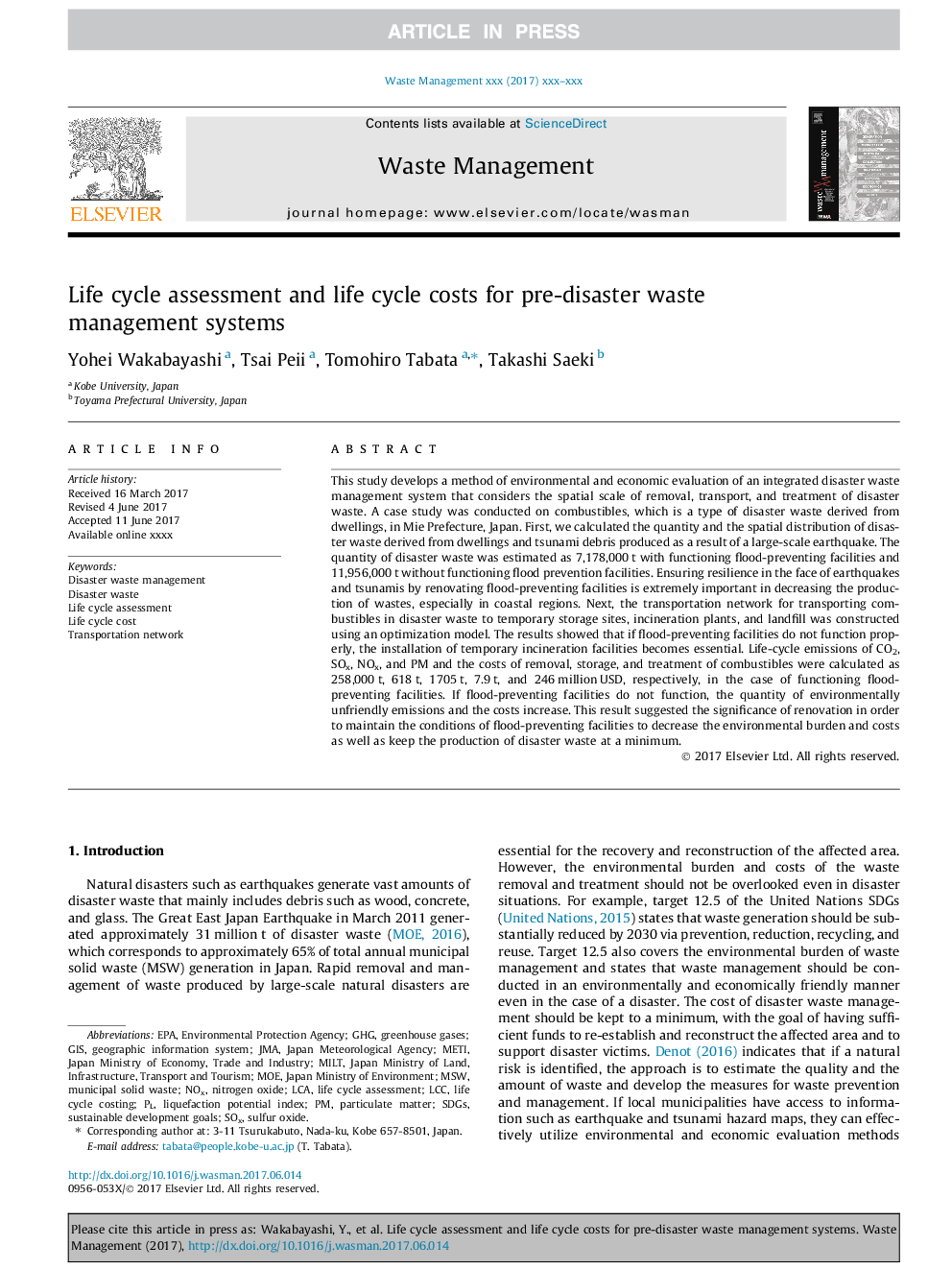| کد مقاله | کد نشریه | سال انتشار | مقاله انگلیسی | نسخه تمام متن |
|---|---|---|---|---|
| 5756616 | 1622618 | 2017 | 13 صفحه PDF | دانلود رایگان |
عنوان انگلیسی مقاله ISI
Life cycle assessment and life cycle costs for pre-disaster waste management systems
ترجمه فارسی عنوان
ارزیابی چرخه زندگی و هزینه چرخه زندگی برای سیستم های مدیریت پسماند قبل از فاجعه
دانلود مقاله + سفارش ترجمه
دانلود مقاله ISI انگلیسی
رایگان برای ایرانیان
کلمات کلیدی
EPAJapan Meteorological AgencyJMALCCSDGsMSWGHGNOx - NOXSOx - SOXEnvironmental Protection Agency - آژانس حفاظت از محیط زیستLCA - ارزیابی چرخه حیاتLife Cycle Assessment - ارزیابی چرخه عمر یا چرخه حیاتSustainable development goals - اهداف توسعه پایدارnitrogen oxide - اکسید نیتروژنSulfur oxide - اکسید گوگردparticulate matter - ذرات معلقMunicipal solid waste - زباله جامد شهریDisaster waste - زباله های فاجعهGIS - سامانه اطلاعات جغرافیاییGeographic information system - سیستم اطلاعات جغرافیاییLiquefaction potential index - شاخص بالقوه مایع شدنTransportation network - شبکه حمل و نقلMETI - متیMilt - میلتLife cycle costing - هزینه چرخه زندگیLife cycle cost - هزینه یابی چرخه عمر، هزینه چرخه زندگیMOE - وزارت صنایعGreenhouse gases - گازهای گلخانه ای
موضوعات مرتبط
مهندسی و علوم پایه
علوم زمین و سیارات
مهندسی ژئوتکنیک و زمین شناسی مهندسی
چکیده انگلیسی
This study develops a method of environmental and economic evaluation of an integrated disaster waste management system that considers the spatial scale of removal, transport, and treatment of disaster waste. A case study was conducted on combustibles, which is a type of disaster waste derived from dwellings, in Mie Prefecture, Japan. First, we calculated the quantity and the spatial distribution of disaster waste derived from dwellings and tsunami debris produced as a result of a large-scale earthquake. The quantity of disaster waste was estimated as 7,178,000 t with functioning flood-preventing facilities and 11,956,000 t without functioning flood prevention facilities. Ensuring resilience in the face of earthquakes and tsunamis by renovating flood-preventing facilities is extremely important in decreasing the production of wastes, especially in coastal regions. Next, the transportation network for transporting combustibles in disaster waste to temporary storage sites, incineration plants, and landfill was constructed using an optimization model. The results showed that if flood-preventing facilities do not function properly, the installation of temporary incineration facilities becomes essential. Life-cycle emissions of CO2, SOx, NOx, and PM and the costs of removal, storage, and treatment of combustibles were calculated as 258,000 t, 618 t, 1705 t, 7.9 t, and 246 million USD, respectively, in the case of functioning flood-preventing facilities. If flood-preventing facilities do not function, the quantity of environmentally unfriendly emissions and the costs increase. This result suggested the significance of renovation in order to maintain the conditions of flood-preventing facilities to decrease the environmental burden and costs as well as keep the production of disaster waste at a minimum.
ناشر
Database: Elsevier - ScienceDirect (ساینس دایرکت)
Journal: Waste Management - Volume 68, October 2017, Pages 688-700
Journal: Waste Management - Volume 68, October 2017, Pages 688-700
نویسندگان
Yohei Wakabayashi, Tsai Peii, Tomohiro Tabata, Takashi Saeki,
